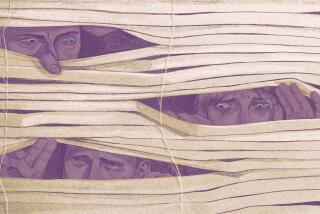What’s Behind the Fuss Over Caller ID
- Share via
On first impression, it’s just another little techie device from a phone system desperate to leave simple communications behind and enter the lucrative “information age.” Known as Caller ID in the residential market and Automatic Number Identification (ANI) to big telemarketers with 800 and 900 numbers, it displays the number of a caller as the call is coming in.
But it must have big potential, because Bell Atlantic, parent of seven Eastern telephone companies, touts it, constantly, in full-page newspaper ads. It must also pose some threat, because Pennsylvania’s Commonwealth Court just ruled that Caller ID service is unconstitutional and illegal, a violation of the individual’s right to privacy and due process.
In the early days of automatic number identification, few consumers knew that when they called 800 or 900 lines--to vote in a poll or respond to a product promotion--the telemarketers on the other end might “capture” their numbers. These were later used for other pitches or sold to other pitchmen, often matched with name, address, lifestyle and even income information.
Public discussion only began when phone companies started offering local subscribers a similar service, typically for about $6.50 a month and $60 to $80 for the display unit. The florist and the pizza parlor (so goes the pitch) can spot phony orders when a number given by the caller doesn’t match the number displayed, and the residential customer (usually portrayed as female) can discourage an obscene caller by announcing she has his (usually his) number.
But there are problems here, and the products have generated both criticism and resistance. The service is a protector only at one end of the call. At the other, the caller is exposed, his or her privacy destroyed--a significant problem for police informants, people calling drug hot lines, someone in a secret shelter for battered women or political refugees, even an ordinary subscriber with an unpublished number. (Oddly enough, a high percentage of the first subscribers to Caller ID have been people who want to keep their own number secret, i.e., unpublished.)
Privacy is equally at issue when a caller’s number is captured by telemarketers, though the question is less protection than control. According to a recent Louis Harris survey, four out of five Americans are concerned about threats to their personal privacy; more than half think they’re asked for too much personal information, and seven in 10 think they’ve lost control over the circulation of their personal information.
The response to these services gets very complex. Some critics see in them no great advantages to the world at large. Commercial list-compilers could easily just ask callers for their numbers, although they obviously assume they’d collect far fewer.
Residential subscribers could screen their calls with answering machines, or use an upcoming service called Call Trace, which records the caller’s phone number with both phone company and police.
Either seems preferable to Caller ID: “What do phone company representatives suggest women do with the caller’s number?” asks ACLU legislative counsel Janlori Goldman in Washington. “Call back? Threaten the caller? Such a vigilante approach is dangerous.”
Other critics dwell on the disadvantages of the services, proposing countermeasures. The ultimate is Pennsylvania’s wholesale prohibition. More common is some kind of proposed blocking, to make sure that callers only give up their numbers voluntarily. California’s Legislature, for one, said that Caller ID (coming in 1991) can only be offered in tandem with blocking, with the result that Pacific Bell is already speaking out of both sides of its mouth, touting the virtues of both Caller ID and Per Call Privacy, which will keep the caller’s number “from being displayed through Caller ID.”
Private companies are already selling antidotes. A Beverly Hills firm called Private Lines charges $2 a minute to route calls through 1-900-STOPPER, so the call’s recipient never gets the original number.
This raises the question of why one should have to pay for privacy. “Before Caller ID,” said Marc Rotenberg, director of the Washington office of Computer Professionals for Social Responsibility, “people made their own decision about whether to disclose their number. Having had the decision taken away from them, consumers are now forced to buy it back.”
Even if blocking is offered free, as it will be in California, consumers must take some action to guard a basic right--an unfair burden, it would seem. Indeed, they may be asked to take action not just once (“Per-Line” blocking) but on every call (“Per-Call” blocking), and for every medium. (Shouldn’t the request for an “unpublished” number, once made, apply to every publication, including Caller ID display?)
Optional blocking for subscribers is naturally anathema to phone companies because it would “undo the service,” says Bell Atlantic spokesman Kenneth Pitt. Instead, they have their own cockamamie antidotes--second lines for each subscriber, or second numbers on a single line, strictly for display on Caller ID units. Anyone calling such numbers back would get a recording, or nothing at all; the customer gets to keep his real number secret; the phone company gets more money.
The true entrepreneur doesn’t care what principle prevails. One already hears of businessmen waiting on a regulatory OK with millions of dollars of Caller ID equipment in a warehouse and, just in case, a bunch of technicians working on a blocking device. There are supposedly devices already that will reject calls from numbers that are blocked, or override the blocking. These will doubtless be followed by devices to block the override of a block.
At this rate, consumer privacy may not need the protection of courts or legislatures. With any more gadgets and anti-gadgets, said Dan Clearfield, director of the Pennsylvania attorney general’s public protection division, there will be “technological gridlock and the system will shut down.”
More to Read
Sign up for Essential California
The most important California stories and recommendations in your inbox every morning.
You may occasionally receive promotional content from the Los Angeles Times.













